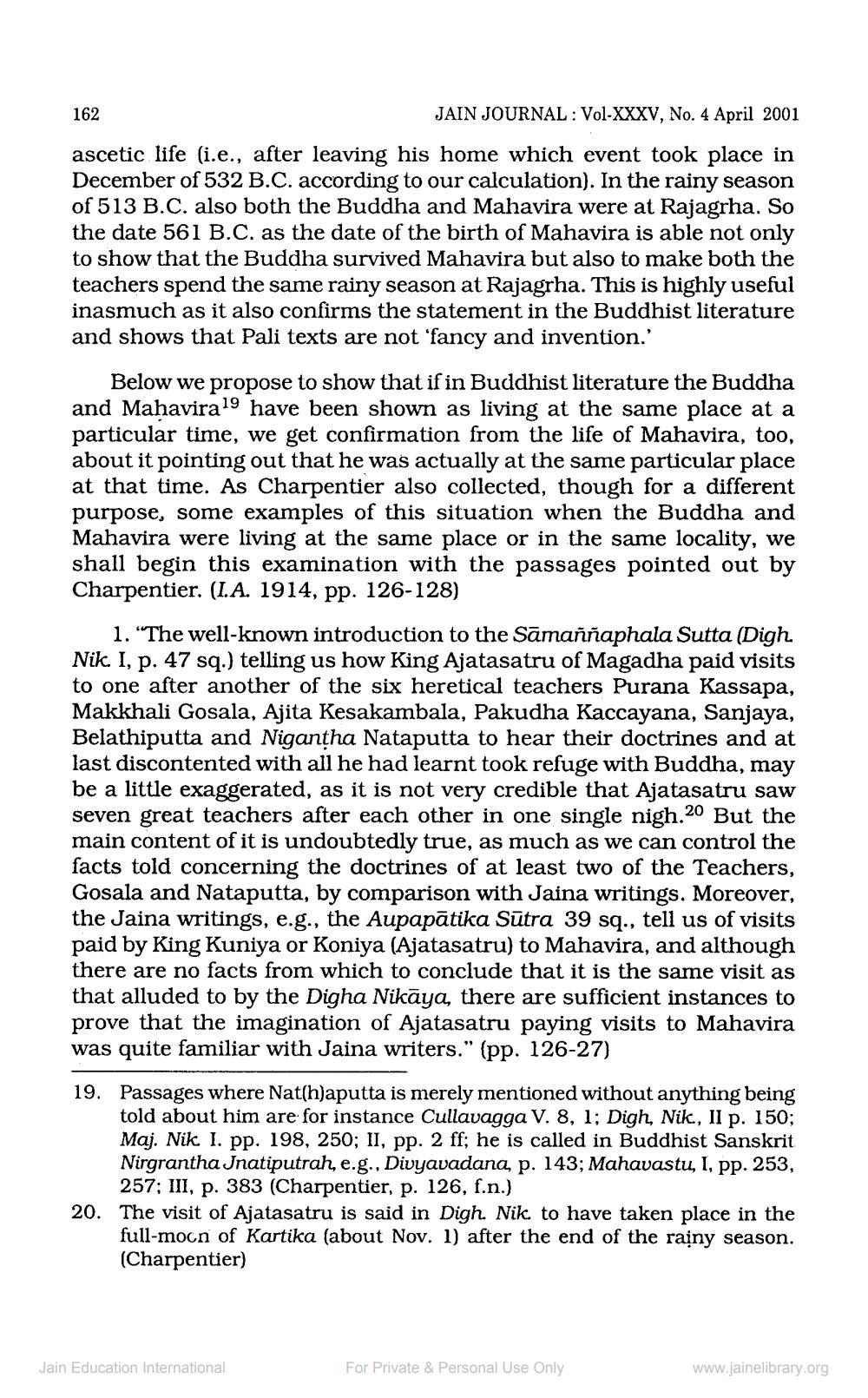________________
162
JAIN JOURNAL: Vol-XXXV, No. 4 April 2001
ascetic life (i.e., after leaving his home which event took place in December of 532 B.C. according to our calculation). In the rainy season
513 B.C. also both the Buddha and Mahavira were at Rajagrha. So the date 561 B.C. as the date of the birth of Mahavira is able not only to show that the Buddha survived Mahavira but also to make both the teachers spend the same rainy season at Rajagrha. This is highly useful inasmuch as it also confirms the statement in the Buddhist literature and shows that Pali texts are not 'fancy and invention.'
Below we propose to show that if in Buddhist literature the Buddha and Mahavira 19 have been shown as living at the same place at a particular time, we get confirmation from the life of Mahavira, too, about it pointing out that he was actually at the same particular place at that time. As Charpentier also collected, though for a different purpose, some examples of this situation when the Buddha and Mahavira were living at the same place or in the same locality, we shall begin this examination with the passages pointed out by Charpentier. (I.A. 1914, pp. 126-128)
1. "The well-known introduction to the Samaññaphala Sutta (Digh Nik. I, p. 47 sq.) telling us how King Ajatasatru of Magadha paid visits to one after another of the six heretical teachers Purana Kassapa, Makkhali Gosala, Ajita Kesakambala, Pakudha Kaccayana, Sanjaya, Belathiputta and Nigantha Nataputta to hear their doctrines and at last discontented with all he had learnt took refuge with Buddha, may be a little exaggerated, as it is not very credible that Ajatasatru saw seven great teachers after each other in one single nigh.20 But the main content of it is undoubtedly true, as much as we can control the facts told concerning the doctrines of at least two of the Teachers, Gosala and Nataputta, by comparison with Jaina writings. Moreover, the Jaina writings, e.g., the Aupapātika Sūtra 39 sq., tell us of visits paid by King Kuniya or Koniya (Ajatasatru) to Mahavira, and although there are no facts from which to conclude that it is the same visit as that alluded to by the Digha Nikāya, there are sufficient instances to prove that the imagination of Ajatasatru paying visits to Mahavira was quite familiar with Jaina writers." (pp. 126-27)
19. Passages where Nat(h)aputta is merely mentioned without anything being
told about him are for instance Cullavagga V. 8, 1; Digh, Nik., II p. 150; Maj. Nik I. pp. 198, 250; II, pp. 2 ff; he is called in Buddhist Sanskrit Nirgrantha Jnatiputrah, e.g., Divyavadana, p. 143; Mahavastu, I, pp. 253,
257; III, p. 383 (Charpentier, p. 126, f.n.) 20. The visit of Ajatasatru is said in Digh. Nik to have taken place in the
full-mocn of Kartika (about Nov. 1) after the end of the rainy season. (Charpentier)
Jain Education International
For Private & Personal Use Only
www.jainelibrary.org




